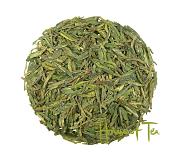Pu-erh tea
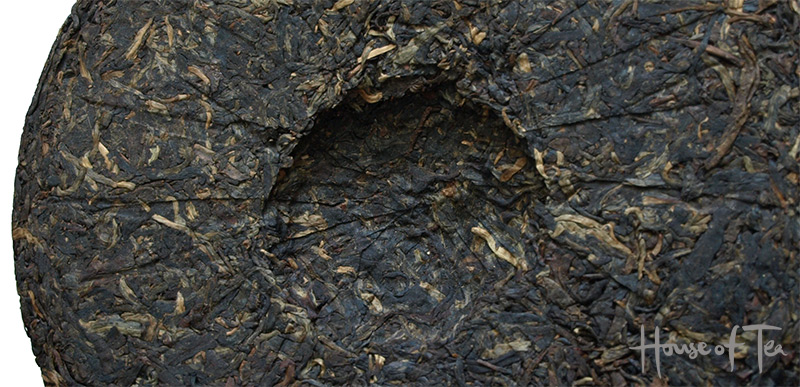
PU-ERH TEA – AGED AND FERMENTED TEA FROM YUNNAN
Pu-erh tea is a tea from the tea plant Camellia sinensis with its origin in Yunnan province in southwest China. Unlike green and black tea, Pu-erh is made to be stored for a long time – the flavour continues to develop year after year.
The tea is sun-dried and often pressed into cakes, bricks or bowl-shaped Tuo Cha. In China, Pu-erh is counted among the so-called dark teas (Hei Cha), and is drunk both as an everyday tea and as a collector’s tea that is stored and tasted over decades.
Our focus is on flavour, origin and ageing properties. Pu-erh is a complex tea with its own character.
WHAT DEFINES PU-ERH TEA?
Pu-erh tea is primarily associated with:
- origin in Yunnan province in China
- often the broad-leaf cultivar Camellia sinensis var. assamica
- sun-dried base material (so-called maocha)
- ageing and microbial fermentation that give a changing flavour profile over time
Unlike ordinary green tea, which is only stopped in its oxidation process and then not intended to mature further, Pu-erh tea is made for ageing.
Shu Pu-erh undergoes a controlled microbial fermentation process (so-called wet piling) already during production, which gives a darker colour and rounder flavour early on.
Sheng Pu-erh is produced more like a green tea and is most often pressed into cakes. When it is stored in warmer and more humid climates, such as in parts of Yunnan, the tea can develop further through slow oxidation and ageing, where the storage environment can also contribute to additional flavour changes over time. In drier climates, such as in northern Europe, slow oxidation and maturation dominate rather than active fermentation.
TWO MAIN TYPES: SHENG AND SHU
Sheng – green / raw Pu-erh
Sheng Pu-erh (green Pu-erh) is produced in a way similar to green tea: the leaves are heated after harvest to stop oxidation, sun-dried and most often pressed into cakes. When the tea is young, the flavour can resemble a stronger green tea – often fresh, sometimes with clear bitterness and a long aftertaste.
With ageing, the flavour becomes softer and more complex: notes of dried fruit, wood, herbs and a deeper sweetness gradually develop. It is this slow maturation that makes aged Sheng Pu-erh so sought after among tea enthusiasts.
Shu – dark / ripe Pu-erh
Shu Pu-erh (dark, ripe Pu-erh) was developed in the 1970s to imitate the flavour of naturally aged Sheng, but in a much shorter time. This is done through a controlled process where the tea is moistened and undergoes a faster microbial fermentation under supervised conditions.
The result is a dark tea with a round, earthy and often soft flavour already from the start. Shu Pu-erh usually has less bitterness than young Sheng, with much more colour and body. It does not change over time in the same way as a Sheng Pu-erh.
HISTORY AND TRADE ROUTES
Pu-erh tea has a strong connection to Yunnan and areas such as Xishuangbanna. Tea has been grown here for a very long time, often on old trees or semi-wild stands, and several classic mountain areas have become known for their distinctive teas.
Historically, the tea was pressed into cakes to make it easier to transport along long trade routes, among them the so-called "Tea and Horse Road" between Yunnan, Tibet and on to other parts of Asia. During the journey the tea continued to mature, which contributed to the appreciation of aged Pu-erh.
FORMS OF PU-ERH TEA
Pu-erh is often traditionally pressed into different forms to facilitate storage and transport. The form affects how the tea is stored and how you break off leaves. The most common forms are round cake (Bing Cha), nest-shaped cake (Tuo Cha), brick (Zhuancha), mushroom-shaped cake (Jincha) and square cake (Fangcha).
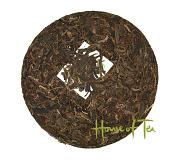
Bing Cha – round, flat tea cake. The most common form for Pu-erh.
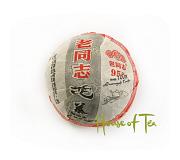
Tuo Cha – smaller, bowl-shaped cake that resembles a bird’s nest.
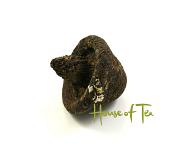
Jincha – mushroom-shaped cake, traditionally developed for certain trade routes.
Other common forms are:
- Zhuancha – rectangular or brick-like block of pressed tea.
- Fangcha – square cake, often resembling a compact "brick" of tea.
AGEING – WHEN THE TEA CONTINUES TO DEVELOP
A particular characteristic of Pu-erh tea is that ageing is a central part of the culture around the tea. The tea is produced and pressed with the intention of being able to mature further over time. Stored correctly, Pu-erh can continue to develop new flavour nuances for many years, sometimes for several decades.
Ageing is a central part of the culture around Pu-erh tea – the tea is produced and pressed precisely with the idea that it will mature further over time. Other teas are also deliberately aged, for example some oolong, white teas, other dark teas (hei cha) and certain green teas in, among other places, the Uji region, but there ageing is more often a specialised tradition. For Pu-erh, ageing itself is an obvious part of how the tea is grown, sold and drunk.
Some basic principles for storage:
- store in a dry but not extremely dry environment – avoid direct moisture and condensation
- airy but protected – not in completely airtight plastic, but not fully exposed either
- no strong odours nearby – tea absorbs surrounding smells
- stable, moderate temperatures without major fluctuations
A typical indoor climate in Sweden generally works well for storage, even if maturation is slower than in a tropical climate. One important thing to remember: ageing can refine a good tea, but does not automatically turn a simpler tea into something "fantastic".
PU-ERH TEA AND HEALTH
In China, Pu-erh tea has traditionally been drunk after meals and associated with digestion and well-being. In recent years, various scientific studies have examined Pu-erh tea and other teas in relation to, among other things, blood lipids and metabolism.
The results vary, and individual studies should be interpreted with caution. Pu-erh can be seen as part of an otherwise balanced lifestyle – not as a quick fix. We focus on offering teas with clear origin, high quality and flavours that stand the test of time.
FLAVOUR AND BREWING
The flavour of Pu-erh varies greatly depending on whether it is Sheng or Shu, how old the tea is and where it is grown. Shu Pu-erh often has earthy, round notes with hints of wood, cocoa or dried fruit. Younger Sheng can be fresher and more herbal or fruity with a distinct aftertaste, while older Sheng becomes softer and deeper.
As a starting point for brewing:
Shu Pu-erh (dark / ripe)
- Dosage: about 3–5 g of tea per 200 ml of water
- Water temperature: about 95–100 °C
- Steeping time: about 2–3 minutes for the first infusion
Sheng Pu-erh (green / raw)
- Dosage: about 3–5 g of tea per 200 ml of water
- Water temperature: about 95–100 °C
- Steeping time: about 2 minutes to start with
Pu-erh is well suited to multiple infusions of the same leaves – many teas can be brewed 5–8 times or more, especially if you use a smaller teapot or gaiwan, but the number of infusions depends on the amount of tea. With a higher leaf-to-water ratio, reduce the steeping time. Traditional preparation of Pu-erh tea can involve 5–10 grams of tea with steeping times of just a few seconds and many short infusions.
For more detailed information on brewing in general, we recommend: Brewing tea »
Examples of Pu-erh tea in our assortment
- Pu-erh Superior Organic 70 grams – organic, ready-to-drink Shu Pu-erh with earthy, balanced flavour.
- 2018 Mini Bing Shu Pu-erh 70 grams – small cakes of dark Pu-erh, practical for both everyday drinking and storage.
- 2017 Yunnan Shu Organic 357 grams – organic Pu-erh cake from Yunnan, good both now and for continued ageing.
- 2023 HOT Lincang Old Tree Sheng 100 grams – our own Pu-erh from old trees in Lincang, with a clear character from the area.
View our full range of Pu-erh teas »
